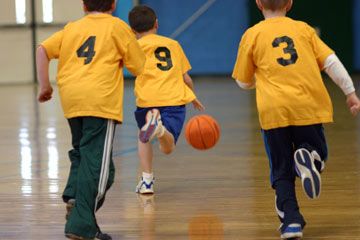Teaching children is often easier when they have a desire to learn. But for kids to want to learn, the process needs to be fun. Whether you are a tennis coach or just want to pass your love of the game along to your children, it's important you don't begin by bombarding young children with the rules. Instead, start by simply bouncing some balls around.
Take your kids out to the backyard, driveway or park and toss a few tennis balls for them to hit with a racquet. And make sure their racquets are the right size -- a full-size racquet may be too large to handle, especially for young children. Smaller models usually will help children feel comfortable using the racquet. First, demonstrate hitting the ball, and encourage children to play and experiment with tennis equipment on their own [source: Whitbourne].
Advertisement
Children can bounce balls off a wall or the pavement, hit balls back and forth with you or even send them across the lawn for the dog to fetch. Ask children to see how many times they can hit the ball without letting it fall or how many times they can bounce a ball with a racquet without letting it get away from them. It doesn't matter what you do, as long as children have the opportunity to familiarize themselves with the equipment and develop an interest in the game.
Once kids are excited about tennis, they will be ready to learn basic tennis techniques. This is the time to teach them the difference between forehand and backhand shots, as well as how to serve the ball. You can also begin to dabble in the rules of the game. To learn more about explaining tennis to children, continue to the next page.
Advertisement


